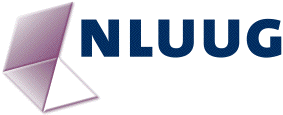
9 november 2006: NLUUG Software Engineering Event

|
9 november 2006: NLUUG Software Engineering Event |
Thursday November 9, the NLUUG will organise, in cooperation with the Stan Ackermans Institute of the TU/e, a Software Engineering Event hosting a number of interesting topics.
All lectures will be held in English.
Thursday November 9, 2006, 13:30 - 18:00
Eindhoven University of Technology
Den Dolech 2
5612 AZ Eindhoven
Room: Movie Theater (Filmzaal) "Zwarte Doos"
How to get there: http://w3.tue.nl/en/the_university/route_and_map/
The TU/e can easily be reached using public transportation (a 10-minute
walk from Eindhoven CS). There are enough parking spots (paid
parking).
FREE (also for non-NLUUG-members!)
Via e-mail to: se-event@nluug.nl
Welcome with coffee/tea
Short introduction to visualizing the Design, Architecture,
and Evolution of Software
Alex Telea (TU/e)
...
Visualizing the results of Empirical Analysis of Architecture
and Design Quality (a.o. MetricView)
Christian Lange (TU/e)
Abstract - The use of models in the development of software systems is rapidly increasing. One of the reasons is that models can be used to assess and improve quality properties of the system, even before the source code is written. Improving quality attributes such as maintainability, extensibility and understandability at an early stage is less effort intensive than in later stages. Software metrics are used to measure the quality attributes. The problem of most existing metrics tools is that it is difficult and tedious for the designer to relate the lists with metrics results to the classes in the model. We present the MetricView tool that combines metrics data mapped on the existing structure of the UML class diagrams. This visualization supports the intuitive identification and correction of quality problems in UML models. Additionally the tool supports evolution analysis, quality models and improved navigation through UML models. More information can be found at http://www.win.tue.nl/~clange/ and http://www.win.tue.nl/empanada/.
Visualizing of Areas of Interests in Software Architecture
Diagrams (a.o. ArchiView)
Heorhiy Byelas (TU/e)
Abstract - Understanding complex software systems requires getting insight in how system properties, such as performance, trust, reliability, or structural attributes, correspond to the system architecture. Such properties can be seen as defining several 'areas of interest' over the system architecture. We visualize areas of interest atop of system architecture diagrams using a new technique that minimizes visual clutter for multiple, overlapping areas for large diagrams, yet preserves the diagram layout familiar to designers. The presentation reviews related work in visualizing areas of interest and diagram data. The demonstration illustrates our proposed techniques on several UML/Component diagrams of complex, real world systems.
Coffee/tea break
Interactive Visual Mechanisms for Exploring Source Code
Evolution (a.o. Visual Code Navigator)
Lucian Voinea (TU/e)
In this presentation, we propose a novel approach to support the maintenance of software systems based on visual assessment of software evolution information archived in software repositories (e.g. CVS, Subversion). Central to our approach is the tight integration of Software Visualization in the traditional Software Engineering (SE) pipeline as a means to get insight in the system evolution and to guide both the analysis and the maintenance tasks. In this presentation we mainly concentrate on the visual analysis component of the SE pipeline and show how software evolution visualization can be used to perform relevant investigation during the maintenance phase (e.g. assessment of change impact). More information is accessbile via http://www.win.tue.nl/~lvoinea/VCN.html
Open Source Code Quality Checking
Adriaan de Groot (KDE)
Technical and social effects of using Coverity in a large
Open Source project.
Adriaan de Groot (KDE)
Drinks in the Lounge outside the Movie Theater